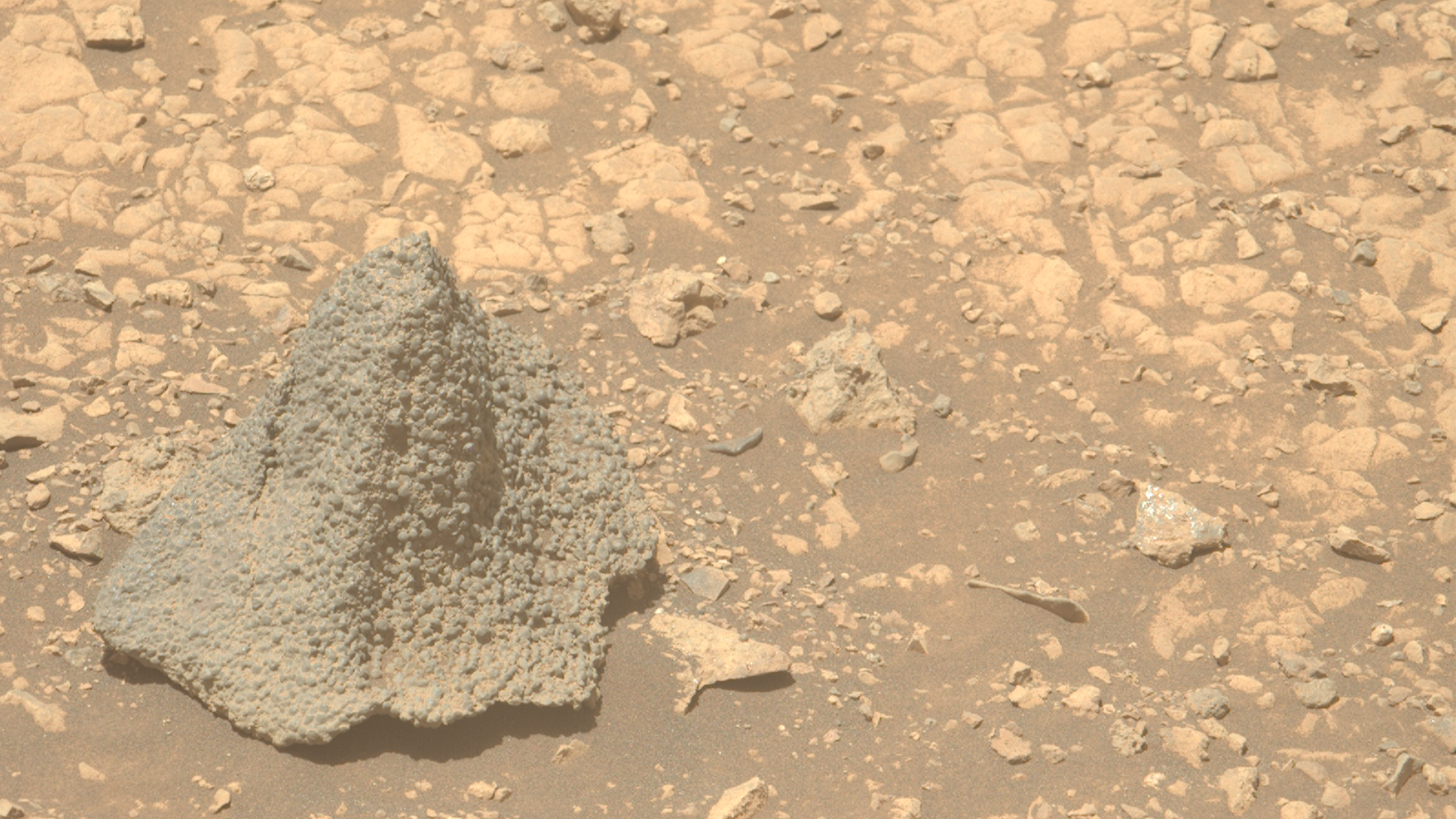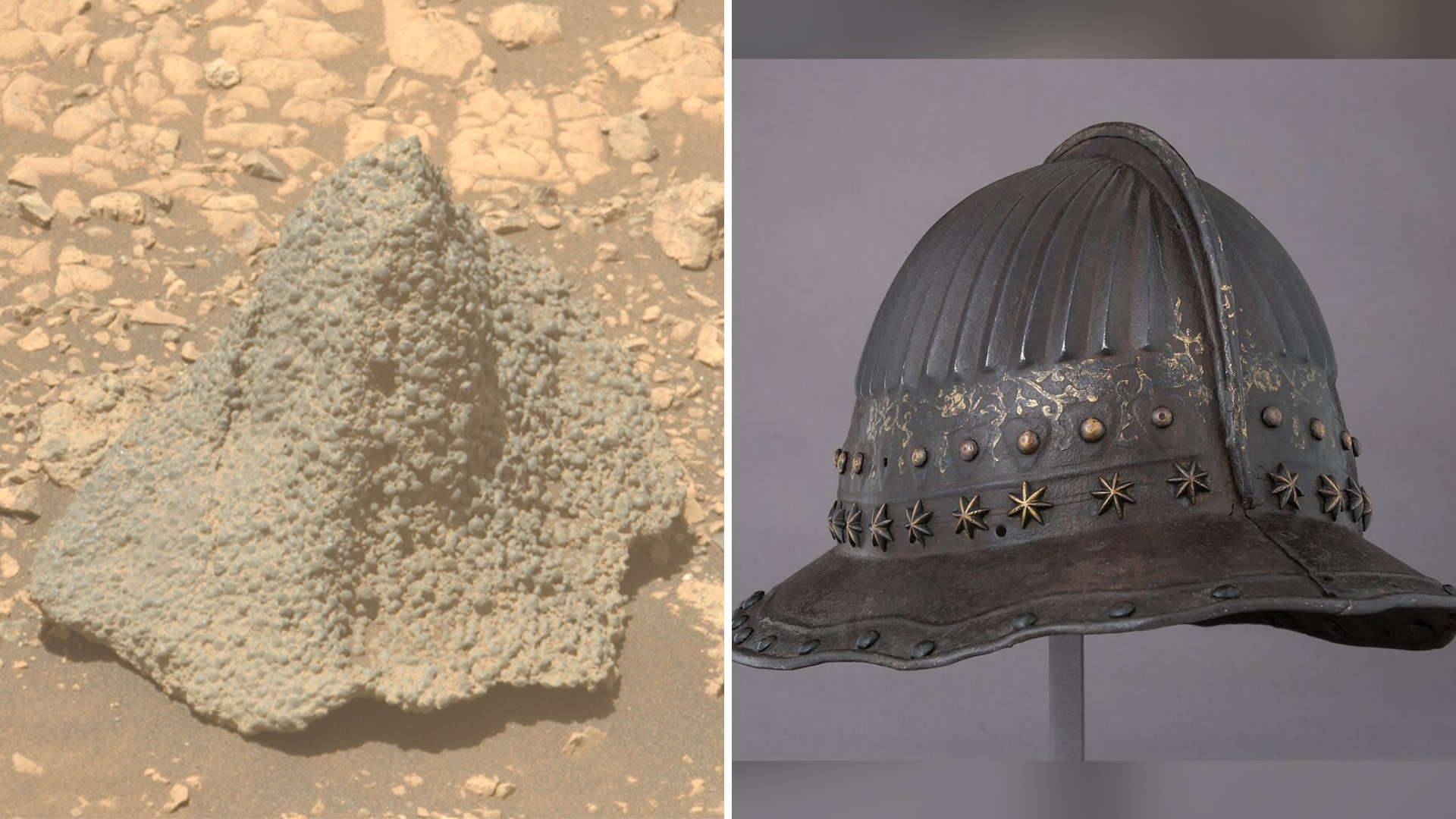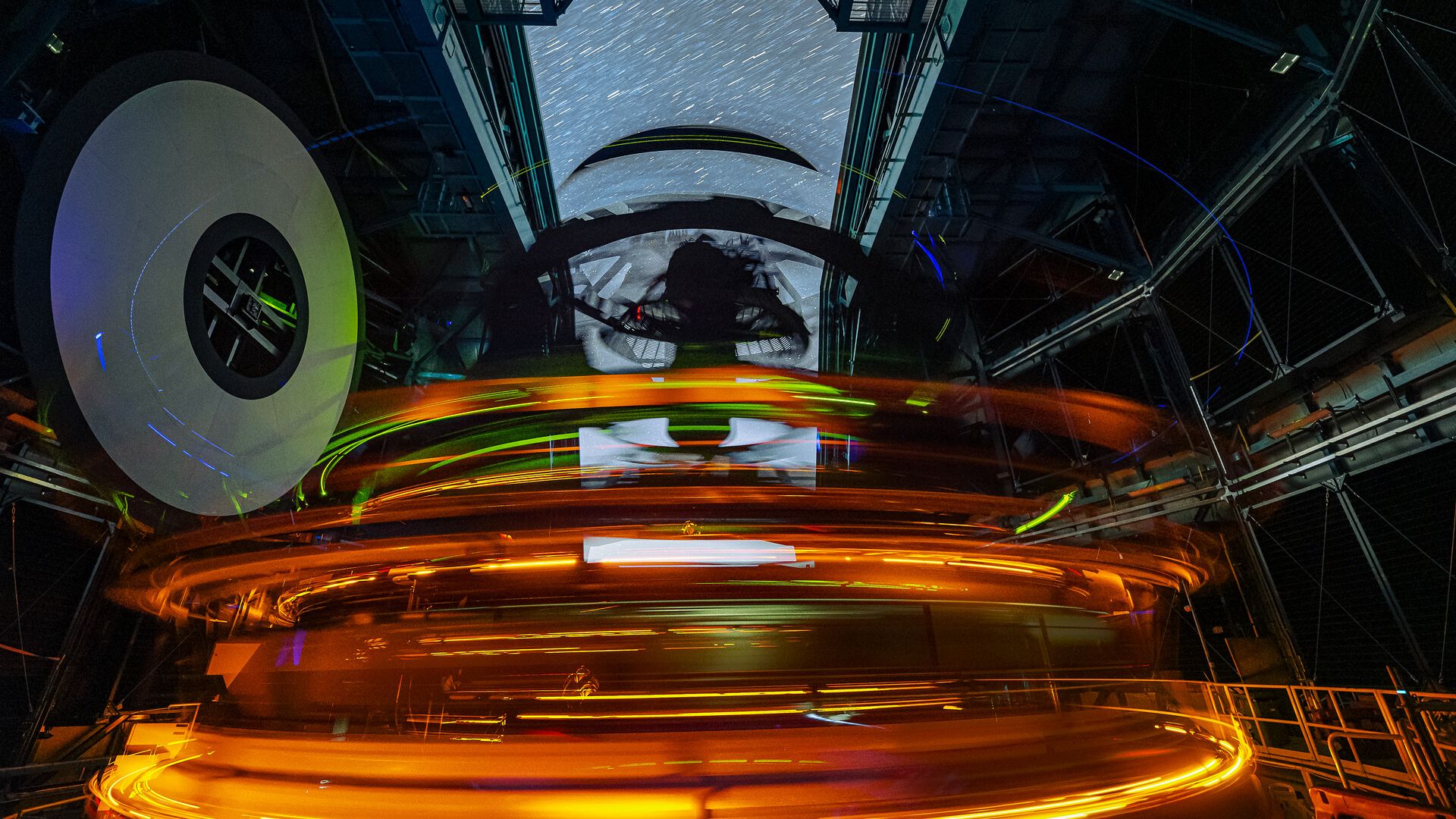
NASA’s Perseverance rover has stumbled across a curious, volcano-shaped rock on the surface of Mars that looks rather like a weathered battle helmet.
Captured by the rover’s Mastcam-Z instrument on Aug. 5, 2025, the rock displays a pointed peak and pitted nodular texture that evokes an image of armor forged centuries ago. On Earth, similar nodule textures can form through chemical weathering, mineral precipitation or even volcanic processes. Perseverance found a similar rock in March 2025.
And it’s these spherules that have scientists intrigued. “This hat-shaped rock is composed of spherules. This rock’s target name is Horneflya and it’s distinctive less because of its hat shape (which looks to me to be generally consistent with the pyramid shape we often see in of wind-eroded float blocks on the surface of Mars) and more because it’s made almost entirely of spherules,” David Agle, a spokesperson for the Perseverance team at NASA’s Jet Propulsion Laboratory, told Space.com.
Scientists think that in some rocks seen on Mars, these spherules form when groundwater passed through pores in sedimentary rocks. But they’re not sure if all of them formed this way; Perseverance’s science team will have its work cut out for it analyzing more rocks to search for answers to this Martian geology mystery and other burning Red Planet questions.
The Mastcam-Z instrument, a pair of zoom-capable cameras on Perseverance’s neck-like mast, allows scientists to capture high-resolution stereo images and spot unusual features like this spherule-covered “helmet” rock from a distance.

Perseverance has uncovered a growing gallery of odd rock shapes, from donut-like meteorites to avocado-like stones. These types of images are examples of a phenomenon known as pareidolia, which describes the human brain’s tendency to impose a familiar pattern on otherwise random visual data — whether that’s a face in the clouds, a rabbit in the moon, or a medieval helmet on the Martian surface.
For now, the helmet rock remains a compelling snapshot of Martian history. Features like this help scientists piece together the Red Planet‘s environmental history, showing how wind, water and internal processes may have sculpted the landscape over billions of years.
Perseverance is currently exploring the northern rim of the Jezero Crater, having successfully completed a challenging ascent to the crest known as “Lookout Hill” late last year.
Source link


